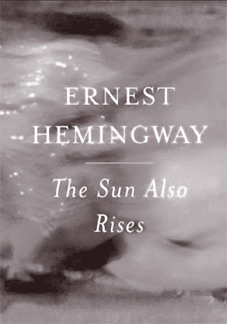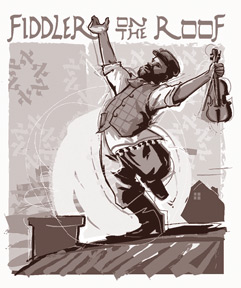Spectacular sunrise and sunset
By Shireen SENADHIRA
The transition from black, deep blue, grey, pearly lemon and orange
of the sunrise at Grand Canyon in Arizona, to pink, salmon colours, reds
and crimson of the sunset will make you gasp or hold your breath as long
as possible, twice a day, once in the morning and then at evening. This
is how my niece, Dilini’s essay began. It was her high school essay
titled, ‘A Week at Grand Canyon’. I read the essay with interest about
the Grand Canyon, which is a wonder of the world and her week’s
activities including camping, hiking, mule rides and canoeing.
 Mostly, how she described the colours of the canyon that changes with
the sun every minute of the day and made all the more vivid at day break
and evening. I held her interest too, by telling her about our sunrise
in Batticaloa after the singing fish finished their choir and at Siri
Pada, mountain where the sun rises and pays obeisance to the holy
mountain top, each morning. Mostly, how she described the colours of the canyon that changes with
the sun every minute of the day and made all the more vivid at day break
and evening. I held her interest too, by telling her about our sunrise
in Batticaloa after the singing fish finished their choir and at Siri
Pada, mountain where the sun rises and pays obeisance to the holy
mountain top, each morning.
The sunrise which occurs daily in our lives is taken much for granted
but it is a recurring miracle. After the darkness, the day dawns, first
mellow, then pale yellow to pearly lemon with a sheen then to pale
orange awaiting the golden sun, bringing new life to everything the
sun’s rays touches. The sunsets are more spectacular before dusk and
night fall with breathtaking vivid colours.
No wonder there were sun worshippers. The Neolithic concept of a
solar barge, the sun traversing the sky in a boat is found also in the
later myths of Ancient Egypt with Ra and Horus. In the Roman Empire, the
festival of the birth of the unconquered sun was celebrated on the
winter solstice. In German mythology, the sun is Sol, in Vedic, Surya
and in Greek, Helios and sometimes called Apollo. During the Bronze Age
in Mesopotamian times it was Shamash that played an important role.
Royalty was addressed as ‘My Sun,’ then. South American cultures had
emphatic sun worship.
In Chinese mythology, originally there were ten suns and they were
brothers. They were supposed to emerge one at a time in the sky. When
they were young and playful, one day they all decided to go to the sky
and play. This made the world a scorching place. A hero, Hou Yi, shot
down nine of them with his bow and arrow to save the earth.
In Aztec mythology, Tonatiuh was the Sun God. In Indonesian
mythology, the sun is revered as father or founder of the tribe. In
Timor, tribal leaders are seen as direct heirs to the Sun God. In
Africa, the Munshi tribe considers the sun to be the son of the Supreme
being, Awando and the moon, the sun’s sister. The Barotse tribe believes
the sun is inhabited by the sky god Nyambi.
Arts and history
 Looking at the arts, the musical play Fiddler on the Roof, is a story
set in the Tsarist Russia in 1905. It is based on Tevye and his five
daughters. A delightful play with an equally delightful music score,
that shows a father’s attempt to maintain his family and Jewish
religious traditions while outside influences encroach upon their lives.
The original Broadway production opened in 1964 and ran for almost ten
years. It became one of the fifteen longest-running shows in history.
Tevye and Golde, the parents sang Sunrise, Sunset, in the marriage
procession of the elder daughter. They sang of life and the wonderment
of their children growing up to be adults when they had not even noticed
that they were getting older. One of the verses is as follows: Looking at the arts, the musical play Fiddler on the Roof, is a story
set in the Tsarist Russia in 1905. It is based on Tevye and his five
daughters. A delightful play with an equally delightful music score,
that shows a father’s attempt to maintain his family and Jewish
religious traditions while outside influences encroach upon their lives.
The original Broadway production opened in 1964 and ran for almost ten
years. It became one of the fifteen longest-running shows in history.
Tevye and Golde, the parents sang Sunrise, Sunset, in the marriage
procession of the elder daughter. They sang of life and the wonderment
of their children growing up to be adults when they had not even noticed
that they were getting older. One of the verses is as follows:
Sunrise, Sunset Sunrise, Sunset Swiftly fly the years One season
following another Laden with happiness and tears.
Louis XIV of France (1638-1715), ranks as one of most remarkable
monarchs in history. He reigned for 72 years, 54 of them, he personally
controlled the French government. The 17th century is labelled as the
age of Louis XIV. Since then, his rule has been acclaimed as the supreme
example of a type of government, absolutism. He epitomised the ideal of
kingship. During his reign, France stabilised and became one of the
strongest powers in Europe. At this time, France became the ideal
culture since he put great care into its enhancement to boast to the
world.
It paid off, as the country changed drastically from savage mediaeval
ways to a more refined exquisite living. His palace in Versailles is a
veritable example. In 54 years he did what several monarchs would have
taken centuries to do. French culture became one of the most appealing
in the world and the name Louis XIV has associated with greatness and
glory ever since. He was also known as the ‘Sun King.’ He chose the sun
as his emblem.
In novels, the title of the sun is well used. Different authors have
alluded to the sun with respect to different themes as can be seen in
the following novels.
The Sun Also Rises was Ernest Hemingway’s (1899 – 1961) first big
novel which immediately established Hemingway as one of the pre-eminent
writers of his time.
 This book encapsulates the angst of the post World War I generation,
known as the Lost Generation. It is a poignantly beautiful story of a
group of American and English expatriates in Paris on an excursion to
Pamplona in Spain written in Hemingway’s evolving style. The left bank
Paris in the 1920s and the brutality of bullfighting in Spain, is
featured and the main protagonist is the flamboyant Lady Brett Ashley
and the hapless Jake Barnes who find themselves in an age of moral
bankruptcy, spiritual dissolution, unrealised love and illusions. This
is the Lost Generation. This book encapsulates the angst of the post World War I generation,
known as the Lost Generation. It is a poignantly beautiful story of a
group of American and English expatriates in Paris on an excursion to
Pamplona in Spain written in Hemingway’s evolving style. The left bank
Paris in the 1920s and the brutality of bullfighting in Spain, is
featured and the main protagonist is the flamboyant Lady Brett Ashley
and the hapless Jake Barnes who find themselves in an age of moral
bankruptcy, spiritual dissolution, unrealised love and illusions. This
is the Lost Generation.
Half of a Yellow Sun is a novel by Chimamanda Ngozi Adichie who
participated in the Galle Literary festival in February 2011. This book
shows the painful history of Nigeria – Biafra War of 1967–70. It was
also called the Nigerian civil War. This was about a conflict caused by
the attempted secession of the southeastern provinces of Nigeria. This
came about as a result of economic, ethnic, cultural and religious
tension among the various peoples of Nigeria.
Documentary novel
The book, The Empire of the Sun was first published in 1984 by Victor
Gollancz. It’s about World War II and written as a documentary novel and
also a sort of biography.
The Scene is laid in China, in Shanghai and in the prison camps
around Shanghai and the time is from 1941 to 1945.
The theme of the story is about an eleven year old boy who survives
the war. The title can be explained thus: Japan is called the “Land of
the rising sun.” At the onset of the war Japan is at the height of its
power (the sun at its highest position).
But soon the decline of Japanese power begins and finally disappears.
So Japan has also become the Land of the setting sun. It also shows how
Japan lost the war and the declination of Japanese power.
Poetry and paintings
 Emily Dickinson, the American poet adopts a playful and charming
fantasy in the poem, ‘I’ll Tell You how the Sun Rose.’ The poem displays
whimsical pleasure in the beauty of sunrise and sunset. The first verse
of the poem is: Emily Dickinson, the American poet adopts a playful and charming
fantasy in the poem, ‘I’ll Tell You how the Sun Rose.’ The poem displays
whimsical pleasure in the beauty of sunrise and sunset. The first verse
of the poem is:
I’ll tell you how the sun rose, A ribbon at a time. The steeples swam
in amethyst, The news like squirrels ran.
If you’ve ever been up at dawn, you know that the sun’s rays can
appear as thin upward reaching streaks. Emily calls this phenomenon
“ribbons”; you may remember that Homer calls it “rosy fingers.” The
ribbon image is continued with the hills untying their bonnets, that is,
the colours of dawn are getting brighter and the streaks more numerous
as dawn signals birds to start their day.
Dickinson’s poem goes on to describe the sunset, picks up an image of
the dawn; the amethyst of dawn has darkened to purple. The children are
yellow (the colour of the sun) climbing up. On the other side, a “grey”
dominie or clergyman takes charge of the children. The reference to a
dominie builds on the earlier steeple reference, both being religious
images.
This poem can also be read symbolically. Sunrise and sunset are
traditional symbols for birth and death, and Dickinson does use this
symbolism in many poems. Ribbons, figuratively rays of light, may
symbolise youth’s vanity and innocence. Steeples symbolise religion or
God. You may take this symbol even further; because steeples reach
heavenward, they may be interpreted as humanity’s yearning for heaven or
union with God. In such a reading, the activity of the squirrels may
stand for the frenetic pace of everyday activities.
Another poem of Dickinson is as follows in the first verse: The Sun -
just touched the morning The morning – Happy thing - Supposed that he
had come to dwell - And life would all be Spring!
And still another verse begins with: The daisy follows soft the sun,
And when his golden walk is done, Sits shyly at his feet. He, waking,
finds the flower near. “Wherefore, marauder, art thou here?” “Because,
sir, love is sweet!”
 Looking at paintings with the same theme, J M W Turner (1775 –1851)
was considered a controversial figure in his day but he is now seen as
one of the best known artists of all time, one who elevated landscape
painting to an entire new level. His painting of a boat going to harbour
where old boats were broken up at sunset was voted the greatest painting
in a British art gallery in 2005. Looking at paintings with the same theme, J M W Turner (1775 –1851)
was considered a controversial figure in his day but he is now seen as
one of the best known artists of all time, one who elevated landscape
painting to an entire new level. His painting of a boat going to harbour
where old boats were broken up at sunset was voted the greatest painting
in a British art gallery in 2005.
The title of this painting is ‘The Fighting Temeraire, tugged to her
last berth to be broken up.’ Turner drew on different aspects of
impressionism and it could be said he laid down the foundation for the
genre ‘impressionism.’ This style is highly elucidated in his art work
of ‘The Fighting Temeraire.’ Turner has incorporated both symbolism and
colour to provide this artwork with a high level of meaning.
By combining a soothing array of colours with a symbolic subject, he
has produced a vibrant masterpiece. Both light and dark areas have been
painted with warm and cool colours and the artwork has been balanced to
provide it with a sense of unity. The audience’s eyes are focused first
toward the colourful and intensifying sunset in the distance, which is
painted in an array of peach, gold, yellows and white. The left half of
the painting consists predominantly of cool colours and contrasts with
the warm and vibrant colours on the right hand side. Turner has used
quick whirling brush strokes to create this impression. It is remarkable
that Turner painted an event that other contemporary artists did not
find worthy of painting. A gallant warship, The Temeraire, had defended
Britain in a decisive victory against the French in the Battle of
Trafalgar but this ship was made obsolete by technological advances.
Another painting, a watercolour, ‘Sunset over a Ruined Castle on a
Cliff,’ exemplifies Turner’s unorthodox use of colour. Watercolour was
used in China since the 3rd Century but was popularized in Europe by
Turner’s generation of painters. Instead of mixing colours and making
them mute, it is clear that Turner applied pure colours layering them
without losing the essence of each colour.
 This painting also embodies over the romantic sentiment of nature
pervading over the accomplishments of civilisation. In the late 1860s,
Claude Monet (1840-1926) and Pierre-Auguste Renoir (1841-1919) and other
artists painted a new style called impressionism by contemporaries. At
an exhibition in 1874, this word was first used by the critics and was
directed derisively at Monet’s painting which was titled ‘Impression:
Sunrise.’ This painting also embodies over the romantic sentiment of nature
pervading over the accomplishments of civilisation. In the late 1860s,
Claude Monet (1840-1926) and Pierre-Auguste Renoir (1841-1919) and other
artists painted a new style called impressionism by contemporaries. At
an exhibition in 1874, this word was first used by the critics and was
directed derisively at Monet’s painting which was titled ‘Impression:
Sunrise.’
This painting was a striking example of the new style. Monet achieved
the effect in this particular painting where the sun rises at dawn, the
orange colour against the grey and the vibrant force of the sun against
the motionless surroundings. He gives the sun the same luminance as the
grayish clouds and this balance in the contrast gives the painting the
eerie quality which would have been lost if the sun was painted much
brighter.
Effect of the sun
The effect of the sun on people and how they have interpreted it has
been shown in all the above. How much it is appreciated and dwelt upon.
Even if, Petruchio, in Shakespeare’s play, Taming of the Shrew, insisted
that day was night for his own intentions and plans, in this way:
Petruchio – Come let’s continue on towards your father’s house. Good
Lord, how bright and splendid is the moon tonight! Katherine – The moon?
You mean the sun! It is not nighttime now. Petruchio –I say it’s the
moon that shines so bright. Katherine– I know it’s the sun that shines
so bright. All the while, Tantric Buddhist monks greeted the Sun
Goddess, Marici, at dawn, chanting to Her, “the glorius one, the sun of
happiness. I salute you O Goddess Marici! Bless me and protect me.”
Actually we cannot do without the sun though we grumble when it is at
its peak in the afternoons and scorching, especially in the tropics.
What would you do if the sun would vanish? That would indeed be a
catastrophe. The temperatures on the earth would drop drastically and
the oceans may get frozen. The plants would not be able to prepare food
by the process of photosynthesis. Energy is needed in order for living
things to grow. Our main source of energy on Earth comes from the sun.
The water cycle would not happen and ultimately it would lead to mankind
being destroyed The sun is the most important part and a sheer necessity
in our lives. We know that everything is possible and can be done with
the sun shining bright in the sky. So let’s rejoice and be happy and
perhaps sing with the birds at tomorrow’s dawn when they greet the
rising sun. |

